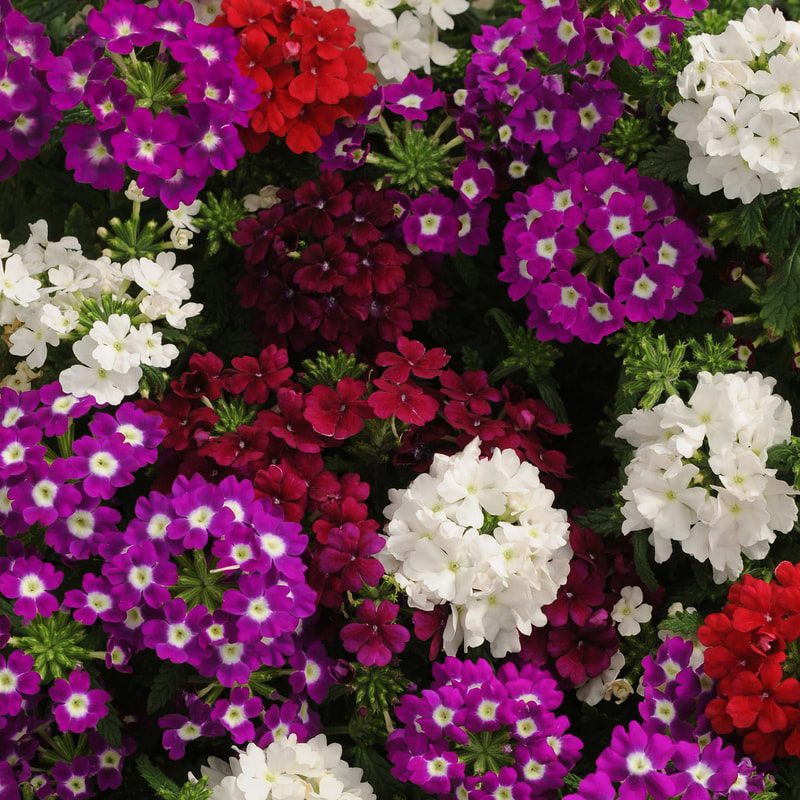|
Pollinators love verbena! Hummingbirds, butterflies, and moths are all frequent visitors. Bees of all types love verbena, too. Known for withstanding the pressure of hot, dry conditions, Verbena is a member of the Verbenaceae family, which is comprised of 800 species in 32 genera, many of them native to the Americas and Asia. This family is characterized by clumps or spikes of flowers on heat-loving herbs, shrubs, trees, or vines. There are many varied types and habits, including upright and tall, as well as mounded and trailing. Some verbena make great ground covers as well.
Hybrid varieties generally have larger flowers, brighter and more saturated colors, and larger, more weather-tolerant leaves than their species relatives. bred to be more heat, water-stress, and disease tolerant (especially powdery mildew). Leaves and foliage are often dense and, in many species, “hairy.” Its flowers are small with five petals, arranged in dense clusters. Typical colors include shades of blue and purple, but they can also be found in white and pink shades. Others are bred to withstand heat and humidity with flowers and bulky growth non-stop through the growing season. While verbena seed is available, many of the newer varieties that have the desirable traits are vegetatively propagated and can be found as young plants at your local garden retailer in the spring. Verbena looks their best when their soil is kept moist, but not wet as they do not like soggy feet. If the growing medium dries down too much, it can cause flushing, commonly known as cycling-out-of-color where the plant loses blooms but remains green and leafy. Verbena plants should be placed in sunny locations, aiming for 6+ hours of direct light. Most species perform well in the ground, landscape, hanging baskets and patio containers. For the compact-growing verbena, those work best in pots and do not have the root vigor for garden bed applications. For prolonged flowering, deadhead verbena by removing spent flower heads. Powdery Mildew (PM) is an unfortunate occurrence on some verbena. The best practice is to look for newer varieties that have a built-in resistance. If PM does appear (it will present as white patches of fluffy fungus on leaves or stem) treat with a neem spray or your favorite fungicide. Catching PM early is the best solution, as this disease can spread quickly, and its fungus blocks sunlight to the plant’s nutrition system, making the plant unable to produce food, which will ultimately cause the plant to perish. Gardening with verbenas can elevate your landscape design and add texture and color to your patio containers. You’ll appreciate their colorful branches and how well they play with other flowers in your garden. Credit to https://ngb.org/year-of-the-verbena/ Contributed by: Vicki Gee-Treft, Master Gardener Volunteer
0 Comments
Leave a Reply. |
|
| North Country MGV | gARDEN bLOGS |
Location |
|

 RSS Feed
RSS Feed